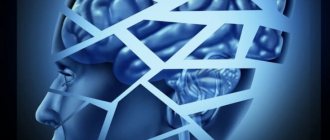Dysarthria in children.
Dysarthria in children is one of the types of speech disorders that occurs due to damage to the central nervous system. The most obvious disorders of this disease are changes in intonation, tempo and rhythm of speech, as well as a violation of voice formation and a disorder of articulation of sounds.
Children who suffer from dysarthria have great difficulty chewing and swallowing. They sometimes have difficulty buttoning clothes, hopping on one leg, or cutting with scissors. It is also difficult for them to write, so they study in specialized schools. Very often there are contradictions between neurologists and speech therapists regarding dysarthria. If a neurologist does not see obvious disturbances in the function of the cranial nerves, he cannot call the speech disorder dysarthria. This question is almost a stumbling block between neurologists and speech therapists. This is due to the fact that a neurologist, after making a diagnosis of dysarthria, is obliged to carry out serious therapy for the treatment of brainstem disorders, although such disorders (excluding dysarthria) do not seem to be noticeable. The medulla oblongata, as well as the cervical spinal cord, often experiences hypoxia during childbirth. This leads to a sharp decrease in motor units in the nerve nuclei responsible for articulation. During a neurological examination, the child adequately performs all tests, but cannot cope properly with articulation, because it is necessary to perform complex and fast movements that are beyond the strength of weakened muscles.
Diagnostics
To confirm pseudobulbar syndrome, differential diagnosis should be made from bulbar syndrome, neuroses, parkinsonism and nephritis. One of the most important signs of the pseudoform of the disease is the absence of muscle atrophy.
It should also be noted that the syndrome is similar in its characteristics to Parkinson-like paralysis. The patient, as with pseudobulbar disorder, experiences speech impairment and violent crying. This pathology proceeds slowly, and in the final stages leads to apoplexy strokes. That is why it is important to seek help from a qualified and experienced doctor as early as possible.
Causes of dysarthria
1. Organic damage to the central nervous system as a result of the influence of various unfavorable factors on the developing brain of a child in the prenatal and early periods of development. Most often, these are intrauterine lesions that are the result of acute, chronic infections, oxygen deficiency (hypoxia), intoxication, toxicosis of pregnancy and a number of other factors that create conditions for the occurrence of birth trauma. In a significant number of such cases, asphyxia occurs during childbirth and the child is born premature. 2. The cause of dysarthria may be Rh factor incompatibility. 3. Dysarthria occurs somewhat less frequently under the influence of infectious diseases of the nervous system in the first years of a child’s life. Dysarthria is often observed in children suffering from cerebral palsy (CP). According to E.M. Mastyukova, dysarthria with cerebral palsy manifests itself in 65-85% of cases. Classification of clinical forms of dysarthria Classification of clinical forms of dysarthria is based on identifying different locations of brain damage. Children with various forms of dysarthria differ from each other in specific defects in sound pronunciation, voice, and articulatory motor skills, require different speech therapy techniques and can be corrected to varying degrees.
Forms of dysarthria
Recovery period in the treatment of newborns
In most cases, if you do not have to deal with incurable severe lesions, the early recovery period begins within the first 2-3 weeks of the child’s life. When dealing with a problem such as pseudobulbar syndrome, treatment at week 4 and beyond includes recovery therapy.
At the same time, for children who have had to endure seizures, drugs are selected more carefully. Cortexin is often used, the course of treatment is 10 injections. In addition to these measures, Pantogam and Nootropil are administered orally to children during treatment.
Bulbar dysarthria
Bulbar dysarthria (from the Latin bulbus - a bulb, the shape of which is the medulla oblongata) occurs when there is a disease (inflammation) or tumor of the medulla oblongata. In this case, the nuclei of the motor cranial nerves located there (glossopharyngeal, vagus and sublingual, sometimes trigeminal and facial) are destroyed. Characteristic is paralysis or paresis of the muscles of the pharynx, larynx, tongue, and soft palate. A child with a similar defect has difficulty swallowing solid and liquid food and has difficulty chewing. Insufficient mobility of the vocal folds and soft palate leads to specific voice disorders: it becomes weak and nasal. Voiced sounds are not realized in speech. Paresis of the muscles of the soft palate leads to the free passage of exhaled air through the nose, and all sounds acquire a pronounced nasal (nasal) tone. In children with the described form of dysarthria, atrophy of the muscles of the tongue and pharynx is observed, and muscle tone also decreases (atonia). The paretic state of the tongue muscles causes numerous distortions in sound pronunciation. Speech is slurred, extremely unclear, slow. The face of a child with tabloid dysarthria is amicable.
SYMPTOMS OF THE DISORDER
Signs of pseudobulbar dysarthria are considered to be a combination of several manifestations of the disease. This type of neurological disorder is characterized by disturbances in the pronunciation aspect of speech - it is confused, incomprehensible and accelerated. The reason for this is paralysis or paresis of the nerve pairs responsible for this activity.
The sensitivity of certain groups of facial muscles is lost due to damage to the following pairs of nerves:
- 5th – front. Controls facial muscles;
- 7th – trigeminal. Its spectrum of action extends to most of the facial muscles;
- 9th – glossopharyngeal. Responsible for the work of the root and back of the tongue, pharynx, larynx, soft palate;
- 10th – wandering. Its function is to regulate the speech apparatus, respiratory system and diaphragm;
- 11th – additional. Scope of action – neck, shoulder girdle muscles;
- 12th – sublingual. Control of salivation, the work of the lower jaw, the hypoglossal ligament and the tip of the tongue.
In both adults and children, the differential and main sign of erased dysarthria is speech impairment. Regardless of the stage of the disease, the patient’s facial expressions are impaired. Additionally, a number of associated symptoms may be present:
- lack of smooth movements in facial and general motor skills;
- tremor of the tongue or mouth in general;
- hypersolivation;
- pseudo-scandalism;
- tongue deviation to one side;
- nasality;
- spasms of the vocal cords;
- hypertonicity of the posterior pharyngeal wall;
- violations of the swallowing, sucking reflex;
- general slowness of movement and speech rate
In each individual case, the symptoms have their own individual direction, which, in turn, depends on a number of reasons. These include the child's temperament, environment and heredity.
Subcortical dysarthria
Subcortical dysarthria occurs when the subcortical nodes of the brain are damaged. A characteristic manifestation of subcortical dysarthria is a violation of muscle tone and the presence of hyperkinesis. Hyperkinesis is violent involuntary movements (in this case in the area of articulatory and facial muscles) that are not controlled by the child. These movements can be observed at rest, but usually intensify during speech. The changing nature of muscle tone (from normal to increased) and the presence of hyperkinesis cause peculiar disturbances in phonation and articulation. A child can correctly pronounce individual sounds, words, short phrases (especially in a game, in a conversation with loved ones or in a state of emotional comfort) and after a moment he is unable to utter a single sound. An articulatory spasm occurs, the tongue becomes tense, and the voice is interrupted. Sometimes involuntary screams are observed, and guttural (pharyngeal) sounds “break through.” Children may pronounce words and phrases excessively quickly or, conversely, monotonously, with long pauses between words. Speech intelligibility suffers due to unsmooth switching of articulatory movements when pronouncing sounds, as well as due to disturbances in the timbre and strength of the voice. A characteristic sign of subcortical dysarthria is a violation of the prosodic aspect of speech - tempo, rhythm and intonation. The combination of impaired articulatory motor skills with disorders of voice formation and speech breathing leads to specific defects in the sound aspect of speech, which manifest themselves variably depending on the child’s condition, and are reflected mainly in the communicative function of speech. Sometimes with subcortical dysarthria in children, hearing loss is observed, complicating a speech defect.
DESCRIPTION OF THE DISEASE
Pseudobulbar dysarthria is a speech disorder caused by paralysis affecting the articulatory muscles. They are constantly either in hypotonicity - relaxed, or in hypertonicity - overly tense. This occurs due to a rupture of the pyramidal tract, so the influence of the cerebral cortex on the spinal cord segments is disrupted.
Disruption of the connection between the speech apparatus and the central nervous system leads to a malfunction of the muscles responsible for the reproduction of sounds. Problems with the speech motor analyzer arise when there is bilateral damage to the corticonuclear pathways connecting the nuclei of the bulbar nerve endings.
In simple terms, this is a disease in which a child is physically unable to pronounce individual sounds and even words, or fully express his emotions. This usually manifests itself as follows:
- fast or too slow speech;
- unintelligible pronunciation;
- not saying the endings of words;
- distorted pronunciation of sounds or replacing them with others;
- unnatural inactivity of the muscles of the lower part of the face;
- open mouth
- involuntary flow of saliva.
Pathology develops with general lesions of the central nervous system of varying severity, for example, cerebral palsy. Changes manifest themselves in young children, mainly in disorders of sucking, chewing, swallowing, and respiratory dysfunction. It depends on the form of the disease.
A characteristic differential sign of the development of pseudobulbar dysarthria is precisely bilateral paralytic damage to the muscles of the tongue, palate, and larynx. As a result, there is a restriction of movement, articulation and phonation.
In some cases, with bilateral paresis, the degree of damage to one side of the organ may prevail over the other. Sometimes a whole series of involuntary movements are preserved, while voluntary ones simply disappear.
Cortical dysarthria
Cortical dysarthria is very difficult to isolate and recognize. With this form, voluntary motor skills of the articulatory apparatus are impaired. In its manifestations in the sphere of sound pronunciation, cortical dysarthria resembles motor alalia, since, first of all, the pronunciation of words with a complex sound-syllable structure is impaired. In children, the dynamics of switching from one sound to another, from one articulatory posture to another, is difficult. Children are able to clearly pronounce isolated sounds, but in the speech stream the sounds are distorted and substitutions occur. Combinations of consonant sounds are especially difficult. At an accelerated pace, hesitations appear, reminiscent of stuttering. However, unlike children with motor alalia, children with this form of dysarthria do not experience disturbances in the development of the lexico-grammatical aspect of speech. Cortical dysarthria should also be distinguished from dyslalia. Children have difficulty reproducing articulatory posture, and it is difficult for them to move from one sound to another. During correction, attention is drawn to the fact that defective sounds are quickly corrected in isolated utterances, but are difficult to automate in speech.
Clinical picture
Pseudobulbar syndrome is characterized by the same triad of symptoms as bulbar syndrome - dysarthria, dysphonia, dysphagia. As with bulbar palsy, the cause of these manifestations is a violation of the innervation of the muscles of the pharynx, soft palate, tongue, and vocal cords.
With pseudobulbar syndrome, there is a more uniform severity of paresis of muscles, the innervation of which is provided by the cranial nerves of the caudal (bulbar) group, than with bulbar syndrome. Paresis is central (spastic) in nature. At the same time, muscle tone increases, and the disorder of differentiated voluntary movements is especially pronounced. Atrophy of the lip muscles and loss of the pharyngeal and palatal reflexes, the arcs of which close in the medulla oblongata, are not observed. At the same time, with pseudobulbar syndrome, the reflex from the lower jaw usually increases and reflexes of oral automatism appear.
Pseudobulbar palsy is characterized by the presence of violent crying, less often laughter. Patients may cry or laugh for any reason. Involuntary crying in a patient with pseudobulbar palsy can occur when baring teeth, holding a piece of paper across the lips, etc.
Often, pseudobulbar palsy can be combined with signs of central tetraparesis, due to the involvement of the pyramidal tracts in the pathological process.
With pseudobulbar palsy, unlike bulbar palsy, there are no disorders of the respiratory and cardiovascular systems, since the pathological process does not affect the vital centers, developing above the medulla oblongata.
Oral automaticity reflexes
The mandibular or mandibular reflex (Bechterew's) is caused by tapping the chin with a hammer or a spatula placed on the lower teeth with the mouth slightly open. The reflex is deep, periosteal. The response is a contraction of the masticatory muscles, causing the jaws to close (raising the lower jaw). Reflex arc
: sensory fibers of the mandibular nerve (third branch of the trigeminal nerve → sensory nucleus of the trigeminal nerve → its motor nucleus in the pons → motor fibers of the same third branch of the trigeminal nerve. The reflex is not very constant normally and increases sharply with pseudobulbar palsy.
Reflexes of oral automatism include numerous reflexes, the response of which is the stretching of the lips forward (sucking or kissing movement of the lips). They are caused by touching the lips, tapping with a hammer on the upper lip or around the mouth in the area of the orbicularis oris muscle (lat. m.orbicularis oris) - proboscis reflex
, and even when the hammer approaches the lips -
Korchikyan’s distance-oral reflex
.
The same response can occur when tapping the back of the nose with a hammer ( Astvatsaturov’s naso-labial reflex
).
The palmar-chin reflex Marinescu-Radovic
is also adjacent to the symptoms of oral automatism .
It is caused by streak irritation of the skin in the area of the eminence of the palmar surface of the thumb. The response - contraction of the mental muscle - is usually noted on the same side. Sometimes, with pseudobulbar paralysis, a “bulldog” reflex is caused ( Yanyshevsky’s symptom
) - convulsive clenching of the jaws in response to irritation with a spatula of the lips, gums or hard palate.
Pseudobulbar dysarthria
Pseudobulbar dysarthria is the most common form of childhood dysarthria. Pseudobulbar dysarthria is a consequence of organic brain damage suffered in early childhood, during childbirth or in the prenatal period as a result of encephalitis, birth injuries, tumors, intoxication, etc. The child experiences pseudobulbar paralysis or paresis caused by damage to the pathways coming from the cerebral cortex to the nuclei of the glossopharyngeal, vagus and hypoglossal nerves. According to the clinical manifestations of disorders in the area of facial and articulatory muscles, it is close to bulbar. However, the possibilities of correction and full mastery of the sound-pronunciation side of speech with pseudobulbar dysarthria are much higher. As a result of pseudobulbar palsy, the child's general and speech motor skills are impaired. The baby sucks poorly, chokes, chokes, and swallows poorly. Saliva flows from the mouth, facial muscles are disturbed. The degree of impairment of speech or articulatory motor skills may vary. Conventionally, there are three degrees of pseudobulbar dysarthria: mild, moderate, severe. 1. A mild degree of pseudobulbar dysarthria is characterized by the absence of gross disturbances in the motor skills of the articulatory apparatus. Articulation difficulties lie in slow, insufficiently precise movements of the tongue and lips. Disorders of chewing and swallowing are revealed faintly, with occasional choking. The pronunciation of such children is impaired due to insufficiently clear articulatory motor skills, speech is somewhat slow, and blurring is typical when pronouncing sounds. More often, the pronunciation of sounds that are difficult to articulate suffers: zh, sh, r, ts, ch. Voiced sounds are pronounced with insufficient participation of the voice. Soft sounds are difficult to pronounce and require adding to the main articulation the raising of the middle part of the back of the tongue to the hard palate. Pronunciation deficiencies have an adverse effect on phonemic development. Most children with mild dysarthria experience some difficulty in auditory processing. When writing, they encounter specific errors in replacing sounds (t-d, t-ts, etc.). There is almost no violation of the structure of the word: the same applies to grammatical structure and vocabulary. Some uniqueness can only be revealed through a very careful examination of children, and it is not typical. So, the main defect in children suffering from mild pseudobulbar dysarthria is a violation of the phonetic aspect of speech. Children with a similar disorder, who have normal hearing and good mental development, attend speech therapy classes at the regional children's clinic, and at school age - a speech therapy center at a comprehensive school. Parents can play a significant role in eliminating this defect. 2. Children with moderate dysarthria make up the largest group. They are characterized by amicity: lack of movement of the facial muscles. The child cannot puff out his cheeks, stretch out his lips, or close them tightly. Tongue movements are limited. The child cannot lift the tip of his tongue up, turn it to the right, left, or hold it in this position. Switching from one movement to another is a significant difficulty. The soft palate is often inactive, and the voice has a nasal tone. Characterized by profuse salivation. The acts of chewing and swallowing are difficult. The consequence of dysfunction of the articulatory apparatus is a severe pronunciation defect. The speech of such children is usually very slurred, slurred, and quiet. The articulation of vowels, usually pronounced with a strong nasal exhalation, is characteristic due to the inactivity of the lips and tongue. The sounds “a” and “u” are not clear enough, the sounds “i” and “s” are usually mixed. Of the consonants, p, t, m, n, k, x are most often preserved. The sounds ch and ts, r and l are pronounced approximately, like a nasal exhalation with an unpleasant “squelching” sound. The exhaled mouth stream is felt very weakly. More often, voiced consonants are replaced by voiceless ones. Often sounds at the end of words and in combinations of consonants are omitted. As a result, the speech of children suffering from pseudobulbar dysarthria is so incomprehensible that they prefer to remain silent. Along with the usually late development of speech (at the age of 5-6 years), this circumstance sharply limits the child’s experience of verbal communication. Children with such a disorder cannot study successfully in a comprehensive school. The most favorable conditions for their education and upbringing are created in special schools for children with severe speech impairments, where these students receive an individual approach. 3. A severe degree of pseudobulbar dysarthria - anarthria - is characterized by deep muscle damage and complete inactivity of the speech apparatus. The face of a child suffering from anarthria is mask-like, the lower jaw droops, and the mouth is constantly open. The tongue lies motionless on the floor of the oral cavity, lip movements are sharply limited. The acts of chewing and swallowing are difficult. Speech is completely absent, sometimes there are individual inarticulate sounds. Children with anarthria with good mental development can also study in special schools for children with severe speech impairments, where, thanks to special speech therapy methods, they successfully master writing skills and a curriculum in general education subjects. A characteristic feature of all children with pseudobulbar dysarthria is that with distorted pronunciation of the sounds that make up a word, they usually retain the rhythmic contour of the word, i.e., the number of syllables and stress. As a rule, they know the pronunciation of two- and three-syllable words; four-syllable words are often reproduced reflectively. It is difficult for a child to pronounce consonant clusters: in this case, one consonant is dropped (squirrel - “beka”) or both (snake - “iya”). Due to the motor difficulty of switching from one syllable to another, there are cases of likening syllables (dishes - “posyusya”, scissors - “noses”). Impaired motor skills of the articulatory apparatus leads to improper development of the perception of speech sounds. Deviations in auditory perception caused by insufficient articulatory experience and the lack of a clear kinesthetic image of sound lead to noticeable difficulties in mastering sound analysis. Depending on the degree of speech motor impairment, variously expressed difficulties in sound analysis are observed. Most special tests that reveal the level of sound analysis are not available to dysarthric children. They cannot correctly select pictures whose names begin with a given sound, come up with a word containing a certain sound, or analyze the sound composition of a word. For example, a twelve-year-old child who has studied for three years in a public school, answering the question what sounds in the words of the regiment, cat, names p, a, k, a; k, a, t, a. When completing the task of selecting pictures whose names contain the sound b, the boy puts aside a jar, a drum, a pillow, a scarf, a saw, and a squirrel. Children with better preserved pronunciation make fewer mistakes; for example, they select the following pictures based on the sound “s”: bag, wasp, plane, ball. For children suffering from anarthria, such forms of sound analysis are not available.
Treatment of dysarthria
Due to the fact that dysarthria is not an independent disease and can be observed with various manifestations of nervous system disorders, the content and order of all treatment measures will be established after the doctor makes a clinical diagnosis, taking into account the age and condition of the child. Treatment of dysarthria in children is carried out comprehensively. Depending on the stage of the disease, the following measures are used: speech therapy correction; drug treatment; massage; breathing exercises; Exercise therapy. Medicines are prescribed by a neuropsychiatrist. There are no drugs for the disease as such. The doctor prescribes medications that only remove the symptoms of the disease and alleviate the general condition of the patient.
Forecast
Unfortunately, it is almost impossible to completely get rid of pseudobulbar palsy. The pathology affects the brain, as a result of which many neurons die and nerve pathways are destroyed. But adequate therapy can compensate for the resulting disorders and improve the general condition of the patient. Rehabilitation measures will help the patient adapt to emerging problems and adapt to life in society. Therefore, you should not neglect the recommendations of a specialist and postpone treatment. It is important to preserve nerve cells and slow down the development of the underlying disease.
© sindrom.info










